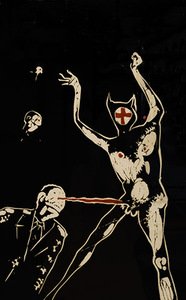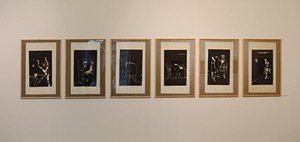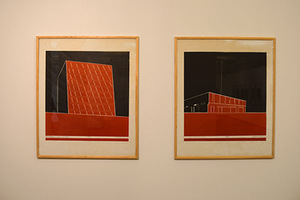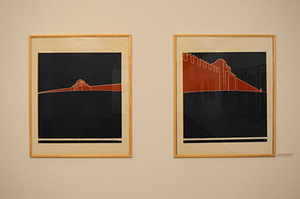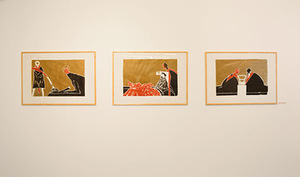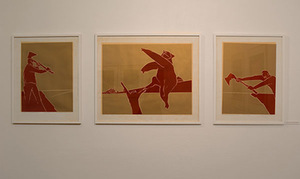Interpretation of Edmundas Saladžius works 3
In brief: E. Saladžius works, in fact, are the exemplary implementation of a true artistic mission. He observes life and world, notices the human vices as if using an X-ray, transfers them through a modernist consciousness and presents the results with real talent to the same humanity, so that we would stop for a moment in this global rush and think - what could we change?
Almost all the critics who had written about the works of E. Saladžius, claim, in unison, that artist uses Aesop's language but few resort to deciphering it. Thus I look at the solo exhibition of the graphic artist open at Pamėnkalnio gallery in Vilnius in order to find the key for the interpretation of his works. I would like to start from the obvious. Exposition features many series that touch upon political topics. The example of E. Saladžius triptych "Meška-chuješka." Understanding the bear as a representation of Russia, the crippled creature under its feet could be understood as a symbol of Lithuania or other Soviet-occupied countries, which can only obey. In this case, Lithuanian graphic artist depicting this scene becomes a kind of a witness who records the Russia's demonstration of power. On the other hand, the image can be perceived as a rather ironic treatment of the former colonial power.
Seemingly politically neutral works could also be associated with occupation-caused grievances, for example "Christmas at a madhouse" series. In the very first linocut of the series a suited individual violates another subject’s - naked, raising his hands - genitalia with his red-laser gaze. Since the ancient Rome, genitalia is a symbol of strength and physical as well as moral capacity. The destinies of this "neutralized" subject and other, possibly dangerous people in the past by locking them in the mental asylum are depicted in other works of the series.
Exhibition also features series based on one biblical story, titled "The book of judges." E. Saladžius linocuts visualize the moments of judgment, punishment and death. However, they are not literal illustrations of the Old Testament, but rather a reflection of the general atmosphere of reckoning.








